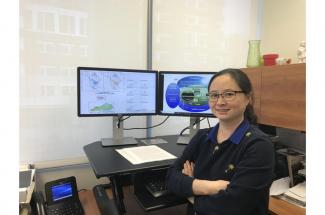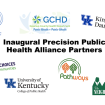UK Part of National Effort Using Big Data to Combat Catastrophes

A University of Kentucky scientist is a part of a national research project that will analyze big data to develop new risk prediction tools for a natural disaster or catastrophic event.
Catastrophic events can devastate all facets of a region. For example, California experienced one of the worst droughts in its history between 2012 and 2016. The drought diminished the snowpack, streams and reservoir levels. The state saw a 50% reduction in hydropower generation as well as groundwater depletion, and losses of winter-run salmon and more than 102 million forest trees. In total, the drought cost the state $3.8 billion between 2014 and 2016 in job losses and crop and dairy revenue alone.
Wei Ren, assistant professor in the UK College of Agriculture, Food and Environment, is a member of the Predictive Risk Investigation System for Multilayer Dynamic Interconnection Analysis, also known as PRISM. Through a $2.4 million grant from the National Science Foundation, group members aim to use big data to identify risk factors for catastrophic events across several sectors. The group includes scientists with expertise in agriculture, climate, computer science, data science, ecology, energy, finance, hydrology, space weather and statistics.
The researchers will focus their efforts on identifying risk interconnections, and systemically important risk indicators across the different domains. This will allow them to predict potential hazards and to lessen the possible system-wide losses once they have occurred. They plan to build large data sets across all sectors to create an interactive data library. Once the library is developed, they will use cutting-edge data analysis to identify critical risk indicators. They also will look for anomalies in the data that might lead to new insights.
“We aim to create early warning systems for catastrophes, improve farmers’ preparedness of these devastating events, and provide assessment of interconnected systems effects on agriculture in these events through the data library,” said Ren who leads the agricultural domain.
In her part of the project, Ren will use historical and contemporary data sets to develop short-term, mid-level and long-term risk indicators for potential natural disasters in agriculture, such as droughts or floods. She will process and analyze numerous data sets collected from the environment, remote sensing monitoring, agroecosystem modeling, crop insurance, financial, long-term field data and National Agricultural Statistics Service surveys across the United States.
As part of the project, the researchers will work with stakeholders in relevant fields, in hopes that policymakers would incorporate their findings. Their goal is to help create early warnings for catastrophes and improve preparedness for devastating events worldwide.
In addition to UK, PRISM members are scientists at Cornell University, Columbia University, Lincoln Park Zoo, Penn State, Tufts University, University of California-San Diego, University of Massachusetts Amherst, University of Minnesota-Twin Cities, and Atmospheric and Space Tech Research Associates.


